AW Whitley, Co. Donegal, January 1941.
The 23rd January 1941 would see the arrival in Ireland of two lost Royal Air Force Aircraft. One, Hudson P5123, its story told here, resulted in four safely interned airmen and a damaged aircraft later purchased by the Irish government.
The other arrival brought with it a much more tragic result.
The map below, screen grabbed from Google Maps, shows the
general location of the place names mentioned below. The
exact location of the aircraft crash is not known by this writer
at this time but it is thought it may be in the area under the
text "Glenard townland" on the map, there are two low peaks
shown on old ordnance survey maps as Glenard West, 397 foot, and
Glenard East, 547 feet. The term 'Glenard Hill' seems
largely to have come into use only in relation to this
crash. The photos of the excavation on the crash site in
1990, see details below, indicate that it was in a wooded
area. Those would appear to be managed forests planted
well after the end of the war.

A form 765 investigation report was raised and filed by 502 Squadron on this occasion. Sadly the original file copy in UK National Archives, within Casualty File AIR81/4935, is damaged so the end of the conclusions cannot be read. The findings of the investigation were summarized as follows in the remarks of the unit commander:
Diagnosis of primary cause of accident
or forced landing:
The navigator was lost, the aircraft
ran short of petrol and had to be abandoned by crew.
Diagnosis of secondary cause of
accident or forced landing.
If the aircraft has got seriously
off its intended position during a patrol it is entirely
dependent on W/T D.F. for homing to its base, particularly
in bad weather. The D.F. facilities at Limavady are
unsatisfactory and in this case apparently the aircraft
wireless set was serviceable. The weather conditions
were bad.
General remarks:
It is suggested that a court of
inquiry should investigate the crash. The cause
appears to have been inadequate navigation and a failure of
the wireless equipment, The aircraft had been out of
sight of land for several hours and in this time, with quite
good navigation the aircraft could have been so far out of
position on its return that only W/T [illegible] facilities could ensure a safe return
[The remainder of the remarks cannot be read from this copy]
The loss of of this Whitley from 502 Squadron was the first of
three losses from the Squadron in 1941 that involved Squadron
members ending up in neutral Ireland, the others being the loss
of Whitley P5045 on the 11 March and
the abandoning of Whitley Z6553 on the 30 April.
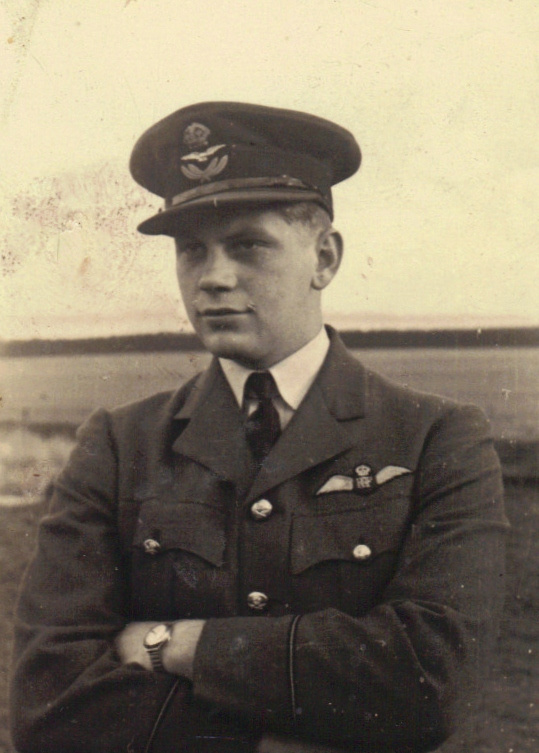 F/O Leslie John WARD 41501 was
born in April 1918 in New Westminister, British Colombia to
Elizabeth and Luke Ward
F/O Leslie John WARD 41501 was
born in April 1918 in New Westminister, British Colombia to
Elizabeth and Luke Ward
He joined the RAF on the 6th of Oct 1938, having sailed to the
UK it seems in August.
Leslie Ward was posted into 502 Squadron during April 1940 from
No 3 Coastal Patrol Flight. His first operational mission
appears to have been on the 17th of May with Sqn/Ldr Corry from
RAF Hooten Park where the Squadron had a detachment of Anson
aircraft.
His internment was widely reported in Canadian newspapers in
january 1941, including the following in the The Vancouver Sun
on January 30th:
Vancouver Flier
Interned in Eire
Love of adventure has led Flying Officer Leslie
John Ward, 22, from the University of .British
Columbia to an internment camp in Eire.
Flying Officer Ward, whose mother lives
at 2401 East Thirty-eighth Avenue, has been
interned in the Irish Free State as the
result of a flying accident, the Air Ministry
notified Mrs. Ward.
He left Vancouver in August 1938 to work his
passage to England so that he could
join the RAF. Last year he graduated
as a flying officer and was posted to the Ulster Air
Command at Belfast.
Last July Flying Officer Ward married an
English girl whom he had met while a student
pilot.
His plane crashed in County Donegal last week
and the only word received since by his
mother is that he is safe and interned
in Eire.
Newspapers in August 1941 carried the exciting news of his
participation in a failed escape attempt on the night of June
25th. He had written to his mother describing the attempt.
His family kindly provided a copy of is memoir of the
landing. In this he recalled:
"About 4 a.m. on the night of 23/24 Jan
41, I was roused from bed by a telephone call-out from the
Limavady Ops room. By standing arrangement, I picked
up my co-pilot, Plt Off Johnson, in the old Morris and we
made our way to the airfield. Johnnie was also married and
lived in digs. The rest of the crew, navigator Sgt
Hogg, two wireless operator/gunners, Sgts Jefferson and
Green, were at the airfield on our arrival. Sgt Hogg
was a stand-in as my regular navigator - a pilot officer
whose name completely escapes me; we had not been together
long - had contracted measles and had been out of action for
weeks. He was a very pleasant and competent chap and
had the remarkable record of having completed a bomber tour
of 42 trips in 6 weeks. He went to one or other of the
Channel ports in a Fairey Battle to bomb the assembling
invasion barges every night over the period. Now he
was lucky to get measles.
At the Ops room, we were told that three
ships had been torpedoed off the west of Ireland – about
15/16º W if I remember aright. They were fairly far
apart and we were to stand by in case a Sunderland flying
boat could not take off from Pembroke Dock, as the weather
was very bad. For some 4 hours, we hung about; the
trip being on and off, our weather was pretty poor
also. Eventually, the Sunderland was scrubbed and we
got away at about 8 a.m. We flew by dead reckoning
navigation to each of the reported positions of the stricken
ships, or now of their lifeboats, if any. The weather
was rough; we were flying in the region of a couple of
weather fronts with the consequent wind shifts. We had
to fly low to keep under cloud for visual search and this
did not aid navigation as we could not make use of W/T MF
triangulation for position fixing, for what this facility
was worth. So the accuracy of our navigation had to be
very doubtful when the target was a lifeboat or two in a
wild ocean. Anyway, we saw nothing after flying to
each of the given positions and back to the first. We
were then faced with a decision: if we returned to base from
where we were, we would arrive back with flying time in
hand, not a thing to do when there could be seamen in peril
and whom we might yet find. On the other hand, if we
searched once more another of the positions, we would have
enough fuel, but things would be pretty tight. We
decided to stay with it, continued with the search and then
set course for base. We made landfall on the west
coast of Ireland at what we identified as the Aran Islands
(Inishmore, Inishmaan and Inisheer) at the entrance to
Galway Bay. This bay is about 53º N and we had aimed
at about 55º 30’ N, i.e. Tory Island on the NW tip of
Ireland. So we were some 150 nautical miles adrift –
heaven knows where we had been during the day. There
were two courses of action to consider: (1) to ignore Eire’s
neutrality and make a beeline for Limavady or Aldergrove;
(2) to fly around the coast to Lough Foyle and
Limavady. Course (1) was attractive as it would ease
our fuel problem, but we would have to climb above cloud,
because of the intervening terrain, and descent at the other
end would call for R/T or W/T contact for an accurate let
down. There was none with Limavady, but there was with
Aldergrove. But the decision was made for us, the
W/Ops reporting that our wireless equipment was out of
action. So we set off around the coast to Limavady.
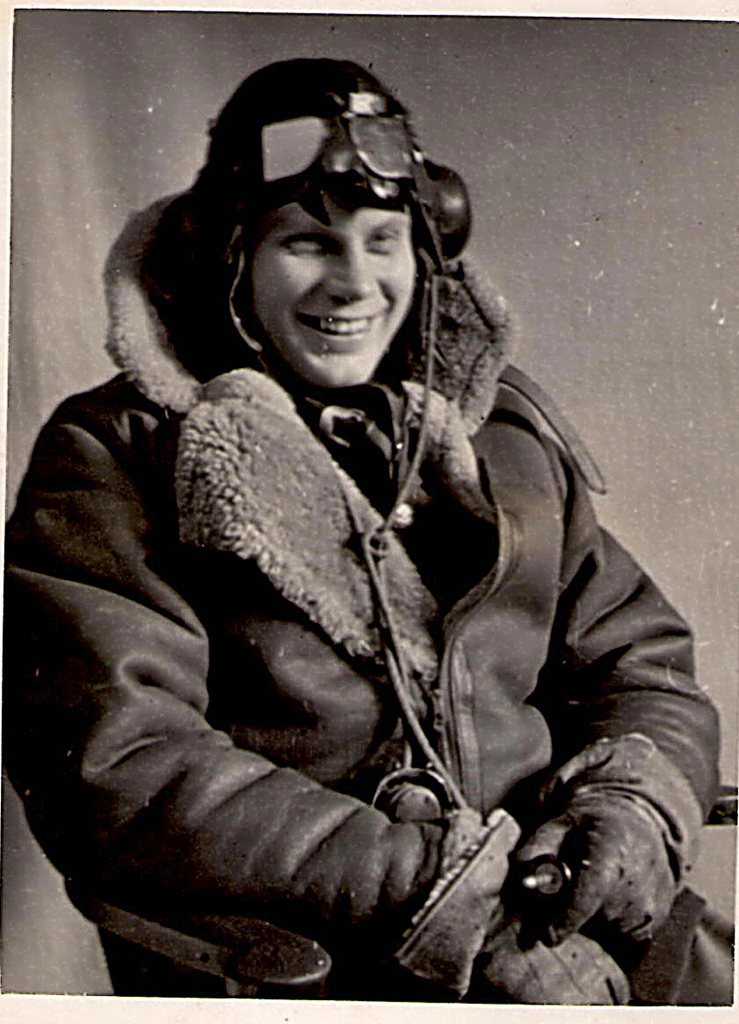 Our flight north went smoothly
enough, darkness came, but we reached Tory Island,
recognised by its lighthouse. We were practiced in
reading the lighthouse coding of flashes and occults as
marked on our charts. From Tory Island, we made our
way 35 miles to Inishtrahull lighthouse off Malin Head and
then on some 20 miles to Inishowen lighthouse at the mouth
of Lough Foyle. We were very low on fuel, but with
only 7 or 8 miles to go, we felt we had made it. We
made a timed run from Inishowen lighthouse but could not
pick up the airfield in the weather prevailing and we were
very mindful of Ben Twitch, which made searching about low
level a dodgy pastime. We made several runs but with
no luck. I was told later that a destroyer in Lough
Foyle had aimed a searchlight at the airfield to guide us,
but we did not see that. With the fuel state
desperate, we had been in the air for nearly 11 hours, I had
to make a decision and this was to climb to about 4000 ft
and head in a south-easterly direction over land for a
spell, turn about and bale out. I had the crew don
their parachutes and line up by the escape hatch – a trap
door in the floor, forward of and a couple of steps lower
than the pilot’s position. My co-pilot was in the lead
with the brief to try and determine that we were over land,
then go, with the other three following at once. After
what seemed an age, the bale out was made. The last
man, Sgt Jefferson, was very slow in following on and this,
as it happened, saved his life. With the crew gone, I
tried to fit my parachute to my harness; they were of the
chest type. I found that I couldn’t do this and get my
arms around it to the control column. I therefore had
to leave my seat and stand in the well, trying to fly the
aircraft with one hand at head level and fighting with the
parachute fitting with the other. I was not
happy. At last, I got the parachute on, noted that I
was at about 200 ft, knocked the ignition switches off
(hindsight says I shouldn’t have done that) rushed to the
trap door, got my head and shoulders through and found to my
horror that my jacket was caught up on something and out I
could not go. Panic in the first degree. I
backed into the aircraft, rushed back to the cockpit and
tried to pull the aircraft out of the dive it was in.
There was no chance standing in the well and heaving at head
level. I saw the aircraft was passing through 1000 ft
and then all my panic buttons were pushed and I believe I
outstripped anything the Bionic Man or whoever could
achieve. I swear that I dived at that trap door hole
from about 6 ft and went through without touching the
edges. I pulled the rip cord at once, saw the ground
(snow covered), saw the aircraft go in with hardly a sound
(it had about 4000 lb of bombs on board and so the silence
was appreciated) had time to note that I was swinging in the
parachute like mad from side to side across my line of
progress which was backward. Before I could do
anything about anything, I hit the deck and the next ½ hour
or so is a mystery to me.
Our flight north went smoothly
enough, darkness came, but we reached Tory Island,
recognised by its lighthouse. We were practiced in
reading the lighthouse coding of flashes and occults as
marked on our charts. From Tory Island, we made our
way 35 miles to Inishtrahull lighthouse off Malin Head and
then on some 20 miles to Inishowen lighthouse at the mouth
of Lough Foyle. We were very low on fuel, but with
only 7 or 8 miles to go, we felt we had made it. We
made a timed run from Inishowen lighthouse but could not
pick up the airfield in the weather prevailing and we were
very mindful of Ben Twitch, which made searching about low
level a dodgy pastime. We made several runs but with
no luck. I was told later that a destroyer in Lough
Foyle had aimed a searchlight at the airfield to guide us,
but we did not see that. With the fuel state
desperate, we had been in the air for nearly 11 hours, I had
to make a decision and this was to climb to about 4000 ft
and head in a south-easterly direction over land for a
spell, turn about and bale out. I had the crew don
their parachutes and line up by the escape hatch – a trap
door in the floor, forward of and a couple of steps lower
than the pilot’s position. My co-pilot was in the lead
with the brief to try and determine that we were over land,
then go, with the other three following at once. After
what seemed an age, the bale out was made. The last
man, Sgt Jefferson, was very slow in following on and this,
as it happened, saved his life. With the crew gone, I
tried to fit my parachute to my harness; they were of the
chest type. I found that I couldn’t do this and get my
arms around it to the control column. I therefore had
to leave my seat and stand in the well, trying to fly the
aircraft with one hand at head level and fighting with the
parachute fitting with the other. I was not
happy. At last, I got the parachute on, noted that I
was at about 200 ft, knocked the ignition switches off
(hindsight says I shouldn’t have done that) rushed to the
trap door, got my head and shoulders through and found to my
horror that my jacket was caught up on something and out I
could not go. Panic in the first degree. I
backed into the aircraft, rushed back to the cockpit and
tried to pull the aircraft out of the dive it was in.
There was no chance standing in the well and heaving at head
level. I saw the aircraft was passing through 1000 ft
and then all my panic buttons were pushed and I believe I
outstripped anything the Bionic Man or whoever could
achieve. I swear that I dived at that trap door hole
from about 6 ft and went through without touching the
edges. I pulled the rip cord at once, saw the ground
(snow covered), saw the aircraft go in with hardly a sound
(it had about 4000 lb of bombs on board and so the silence
was appreciated) had time to note that I was swinging in the
parachute like mad from side to side across my line of
progress which was backward. Before I could do
anything about anything, I hit the deck and the next ½ hour
or so is a mystery to me.
I awoke to find myself flat on my back
with the parachute cords leaving me in a straight line from
my chest, between my legs to my parachute 20 ft away.
I recall vividly lying there wondering if I was intact and
trying each limb in turn and then sitting up. All
seemed well. But I saw people in little groups walking
towards the bits of my aircraft, mainly the tail unit that
was sticking up in the air and lit by fragments that were
burning. The aircraft had plunged into a bog near
Buncrana, on the eastern side of Lough Swilly, the fjord
west of Lough Foyle. Hence the silent crash and other
blessings. I made a rapid appreciation of the
situation that would have done credit to Field Marshal
Montgomery and decided that my best bet was to head on a
slightly roundabout path in the direction from which the
sightseers were coming to try by some means to establish
where I was – mainly on which side of the border I
was. How I was going to know that I have no notion now
but it seemed a good idea at the time. I had made my
way a couple of hundred yards when I came to a stream.
Fearlessly, I crossed this despite it being about 6 inches
deep. As I stepped out on the far shore, some 5 ft
away I bumped into a man and his young son who had come to
see what was cooking. Politely he said goodnight (you
must appreciate that the Irish all make greetings a step
ahead – like good morning at night and good afternoon in the
morning) and I put to him the question topmost in my mind
such as Ulster or Eire. He said Eire, so I said good
night really meaning goodbye. However, he said not to
worry but to follow him and he would see me right.
Rather the converse of take me to your leader. He took
me to a cottage in which there was a woman and a young girl
and an open peat fire. I was offered a chair at a
table and a cup of tea and a couple of boiled eggs, if I so
wished. Then people began to arrive, mainly women and
children, who said nothing but stared at me, nothing hostile
but rather disconcerting. Very soon a man arrived who
sat opposite me at the table silently, whilst covering me
with an enormous revolver. I then realised that the
boy I had met at the stream was missing. The word had
been got out. After a time a very affable police
superintendent arrived, told me not to worry, for I would be
over the border in the morning. He had pushed many a
drunken sailor over the bridge at Londonderry, he said, when
they had lost their way. I was taken by him under
escort to a police station, I believe at Buncrana, where I
was again assured that my return over the border was
certain. Soon some Irish Army officers arrived and
said they were to take me to the local Army HQ but not to
worry, etc., etc. I cannot recall where the HQ was but
think it was in the Lough Swilly Hotel, near Londonderry,
but on the Eire side of course. I was shown to a
bedroom and invited to take my rest. I was very tired
and it was now evident that I had done some damage to one
knee – can’t remember which one now, and the prospect of a
lie down was welcome but the bed linen was filthy – I do not
exaggerate when I say it was black. The clothes were
turned back and there was the pit left by the last
occupant. As I was to become accustomed to later, the
Irish Army bed sheets were real linen, right enough, but of
the weight of sail canvas! I had just taken off my
flying jacket and flying boots and preparing to lie on top
of the bed when a Royal Navy Commander was announced.
He was in uniform, but hatless, and wearing a Navy
mackintosh which, in those days did not bear badges of rank
(nor did those of the RAF) – so was “incognito”. He
had come to find out what we found out in the Atlantic, if
anything. I had nothing for him, of course. As
he left, he told me not to worry about my position as it was
certain I would be over the border in the morning.
Later on, I was told by Elizabeth that members of the
Squadron had formed a party to dash across the border by car
and rescue me, but were having difficulty in finding out
where I was from moment to moment and were eventually told
not to bother as I was being sent back in the morning.
The next day, I was told by the Army
that there were certain formalities to be gone through
before I was returned and we were to go to Army HQ at
Athlone. By this time, I was joined by my wireless
operator, Sgt Jefferson, and we set off in a car to
Athlone. There we were told that there was a change
and we were to go to Command HQ at The Curragh in
Kildare. So Jefferson and I and our officer escort
took lunch and then bundled into the car again and set
off. We arrived at The Curragh in the evening and were
taken to the Officers’ Mess where we were met by the Camp
Commandant, Colonel McNally. He was very friendly,
told us not to worry – all would be well. We were fed
on sandwiches and drinks and then told that we had better
get to our rooms and get some rest. We were taken
about a mile to a hutted camp surrounded by a high barbed
wire fence. The gates were opened, we went in, the
gates were shut and locked and we were interned –
prisoners. This we found out when we went into one of
the huts to be greeted by a batch of 6 RAF aircrew, who
quickly put us in the picture. Four of them had
arrived in the Camp only hours before us and, in fact, crash
landed on the shores of Galway Bay at the very time we were
sniffing around the Aran Islands as mentioned earlier.
So ended that particular chapter of events and I was not
happy."
He was one of the Allied internees that was released on the 18th
of October 1943. He filed an escape and evasion report
upon his return to the UK that week. The reports reads as
follows but strangely he is quoted as saying his flight occurred
on 24 Nov 1940. The date of his interview was 20 October
1943 and the file was signed off by the reporting officer on 2
December of that year. It is possible that the details of
the date were confused during that time:
1. Internment
I was captain of a Whitley aircraft which left LIMAVADY
on 24 Nov 40 on an operational flight. Owing to bad
visibility and shortage of petrol, we were compelled to bale
out in County DERRY in the neighborhood of LOUGH
SWILLY. Three members of the crew were drowned.
The other members of the crew were:-
Sgt. G. V. JEFFERSON, Wireless Operator
P/O. E.I.C. JOHNSON )
Sgt. W. HOGG
) drowned
Sgt. J GREENWOOD )
Both JEFFERSON and I were arrested shortly after
landing by the local security police. We were taken to
THE CURRAGH Camp on 26 Nov.
2. Attempted escapes
(a) On 25 Jun 41 I was one of the nine who escaped,
but was recaptured.
(b) In Feb 42 I took part in the mass ladder escape,
but did not get over the wire. I was not in the camp
at the time of the mass attempted escape on 3 Aug 42.
For much of the time he was interned in The Curragh he was the
highest ranking officer, and was the head of the internees
group.
He returned to active service with the RAF and was posted to
102 Squadron in July 1944, where he was awarded the
Distinguished Flying Cross. His mission with 102 Squadron
was on the 1st August to a target in France but the mission was
ordered to be abandoned by the master bomber. The award was
published in the London Gazette on the 16 February 1945.
He remained in the RAF post war, being promoted to Squadron
Leader in 1947 and lived out his days in the United
Kingdom. He was further promoted to Wing Commander in
1954. He passed away aged 76 in June 1994 in Shropshire
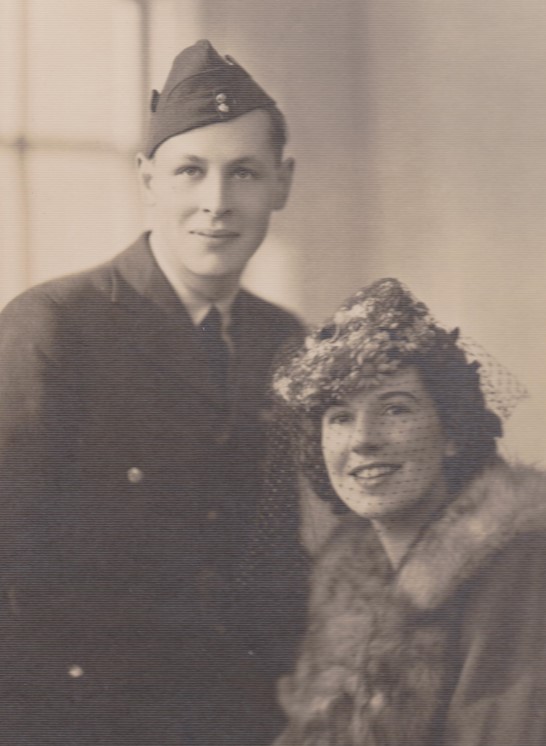 P/O
Edward Ian Croucher JOHNSON 41931 was a young Royal Air
Force Pilot, born in Tunbridge Wells in January 1917. His
mothers name is unknown but his father is recorded as an Edward
Johnson from Rushfer, Sussex. A note in the 24 year old
officer's casualty file points out that that his father was "not
to be informed".
P/O
Edward Ian Croucher JOHNSON 41931 was a young Royal Air
Force Pilot, born in Tunbridge Wells in January 1917. His
mothers name is unknown but his father is recorded as an Edward
Johnson from Rushfer, Sussex. A note in the 24 year old
officer's casualty file points out that that his father was "not
to be informed".
He had been married only eight short months previously, on June
1st, to Lois Meade Newton from Antrim, the daughter of an RAF
officer, Thomas Meade Bertram Newton. The wedding had
taken place in Antrim Parish Church. The young couple
would have to deal with the tragic death of F/Lt T M B Newton of
14 Flying Training School at Cranfield on the 23 October 1940
aged 44. Lois, his widow, living in Rickmansworth,
Hertfordshire in the immediate aftermath of his death.
The officers body was found washed up on the shores of Lough
Foyle in the townland of Ballyrattan on the 25th of January
1941. His death certificate issued by the local registrar
records his name as Edward I C Johnstone of Aldergrove, Co
Antrim. P/O Johnson's remains were returned to England and
were buried in Rickmansworth (Chorleywood Road) Cemetery.
It was finally in late 2023 that is was discovered that Lois
had re-married post war to a gentleman name Ernest De Boos, and
that she had lived to the grand age of 101, passing away only in
July of 2022. Ian, as he was referred to by his family,
was mentioned in her obituary and had never been
forgotten. Lois and Ian's daughter was born the summer
after his death and his grand children and great grand children
fondly remember his sacrifice.
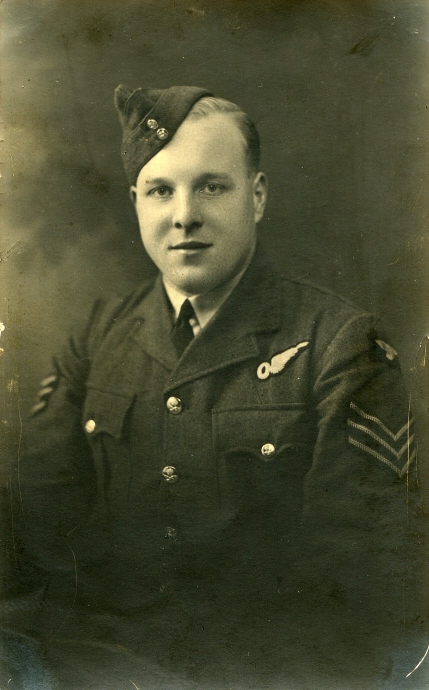 Sgt
James Edgar HOGG 969800 was the son of Barbara A Hogg from
Cheadle Heath, Stockport. Most wartime records and indeed
her own letters to the RAF highlight that James was her adopted
son. The 1939 register finds James and Barbara residing at
their home in Stockport. Barbara was a Public School
Headteacher and James is listed as a student, awaiting
mobilization from RAF.
Sgt
James Edgar HOGG 969800 was the son of Barbara A Hogg from
Cheadle Heath, Stockport. Most wartime records and indeed
her own letters to the RAF highlight that James was her adopted
son. The 1939 register finds James and Barbara residing at
their home in Stockport. Barbara was a Public School
Headteacher and James is listed as a student, awaiting
mobilization from RAF.
He had been born in South Shields on the 8 of July 1918
It is clear from the AIR81 files that Barbara Hogg corresponded
with the other members of the crew and the family of Sgt
Greenwood. She wrote to the RAF in March 1943 requesting
details of how to contact the two surviving crew members.
A letter of reply dated the 29 April 1943 directed her to write
to F/O Ward and Sgt Jefferson at the the Curragh Camp, Co.
Kildare, Eire. She was also given the names of P/O Johnson
and Sgt Greenwood. She also wrote at that time to their
former Squadron commander, W/Cdr R Terrance Corry.
Some months later, she forwarded letters of condolence to the
families of Sgt Greenwood and P/O Johnson via the Air Ministry.
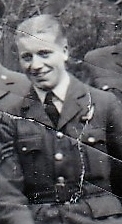 Sgt George Victor JEFFERSON 816145
was the only Allied internee during the war to hail from
Northern Ireland.
Sgt George Victor JEFFERSON 816145
was the only Allied internee during the war to hail from
Northern Ireland.
George was born on the 11 Nov 1920 to George and Margaret
Jefferson. He lived at No. 97 University Avenue in
Belfast. He had enlisted in the RAF in January 1939
He was released in October 1943 along with F/Lt Ward and other
internees. By this time he had been promoted to the rank
of Warrant Officer. It is not known at this time if he
returned to operational flying.
He passed away in July 2008 in Belfast.
The daughters of another British internee, Robert Harkell, were
able to provide the following group photo of some of the British
internees. The three men standing at the rear of the photo
in civilian attire were local civilians. Those faces that
can be identified are believed to be:
In the front row of the photo, from left to right
Sgt Robert George HARKELL 749495
Sgt Norman Vyner TODD 551678
Sgt William BARNETT 973926
Sgt David SUTHERLAND 51946
It seems most likely that the tall man standing at the very left
of the photo is Sgt Herbert Wain RICKETTS 581473.
The airman with the light coloured hair standing at the middle
is Sgt George Victor JEFFERSON 816145
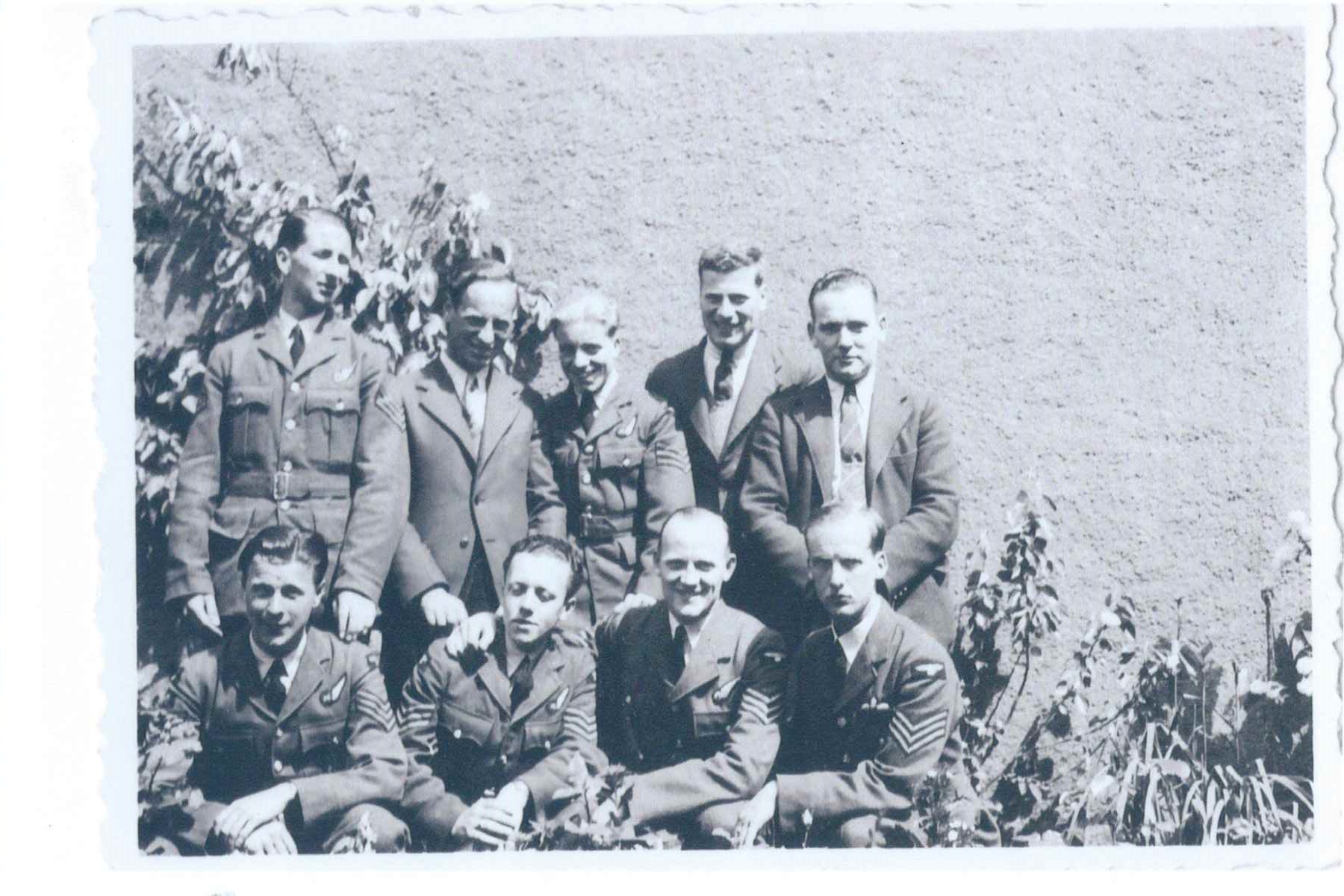
Another photo from the family of internee S J Hobbs included
both Denys Welply and Norman Todd.
It is not known when the image below was taken exactly, but it
includes both Sgt Hobbs and F/Lt Proctor so is likely to have
been around the time of Sydney Hobbs wedding, though the lady in
the photo does not appear to be his wife Joan. This small
and battered photo shows the following Royal Air Force
internees:
Standing, Left to Right: Herbert Wain RICKETTS, Denys
Welply, David SUTHERLAND, Douglas Victor NEWPORT, Leslie John
WARD, Robert George HARKELL, William Allan PROCTOR, George
Victor JEFFERSON and Aubrey Richard COVINGTON.
Kneeling, Left to Right: Norman Vyner TODD, Sydney John
HOBBS.
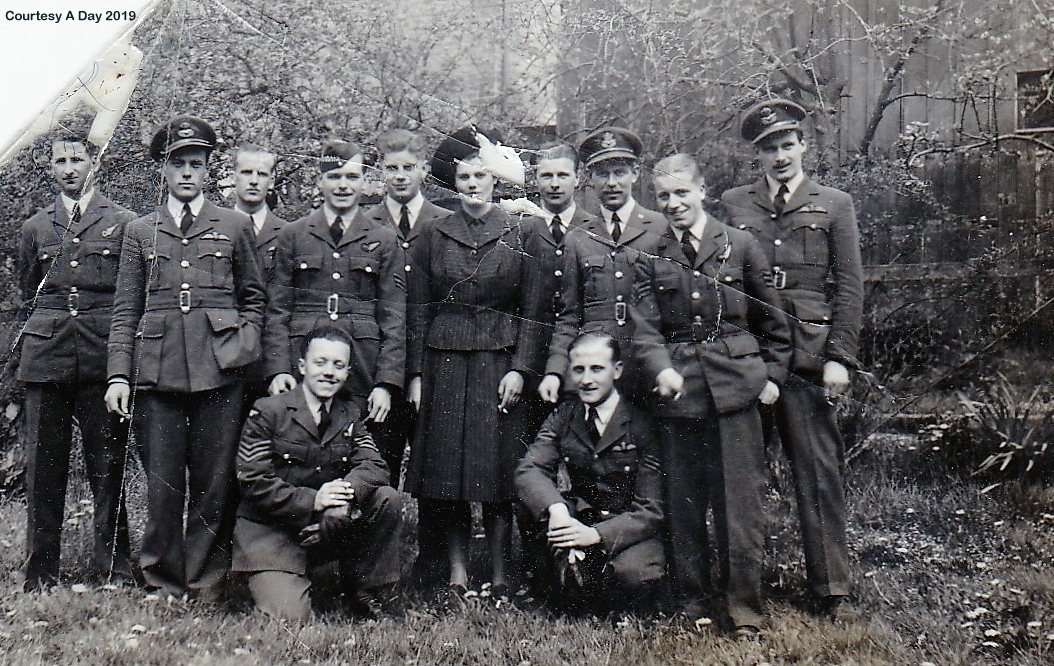
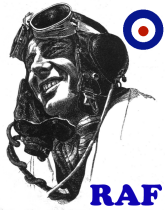 Sgt Lewis GREENWOOD 553918 was born to
Samuel and Mary Agnes Greenwood, of Halifax, Yorkshire in March
1922. He doesn't appear listed with his parents in the
1939 register and there are no other siblings residing with
them.
Sgt Lewis GREENWOOD 553918 was born to
Samuel and Mary Agnes Greenwood, of Halifax, Yorkshire in March
1922. He doesn't appear listed with his parents in the
1939 register and there are no other siblings residing with
them.
The Yorkshire Post and Leeds Intelligencer of September 2nd,
1941, published a note that Lewis Greenwood (19), R.A.F., only
son of Mr and Mrs Greenwood, St Augustine's Terrace, Halifax -
had previously been reported missing, but was now officially
stated presumed killed.
His name was recorded in the "Calderdale War Dead, A
biographical Index of the War Memorials of Calderdale" as: 76 St Augustine's Tee, Hx. Educ Warley
Council Sch. Worked for Hellowells,
Delph St Metalworks.
Enlisted at 17 No 553918
The wreckage of the stricken bomber had buried itself in the boggy hill side. And there it lay until some local men undertook to excavate the crash site in September 1990. This effort is described by John Quinn in his 1999 book, "Down in a Free State". The dig revealed an engine, a landing gear leg and other pieces of wreckage. It also revealed an unexploded bomb! While the Irish Army report from 1941 had stated that all ordnance had been dealt with, one of the aircraft's bombs eluded the Irish Army. The Irish Army of 1990 had to be called in once again and they made the device safe. This story made the newspapers in Ireland.
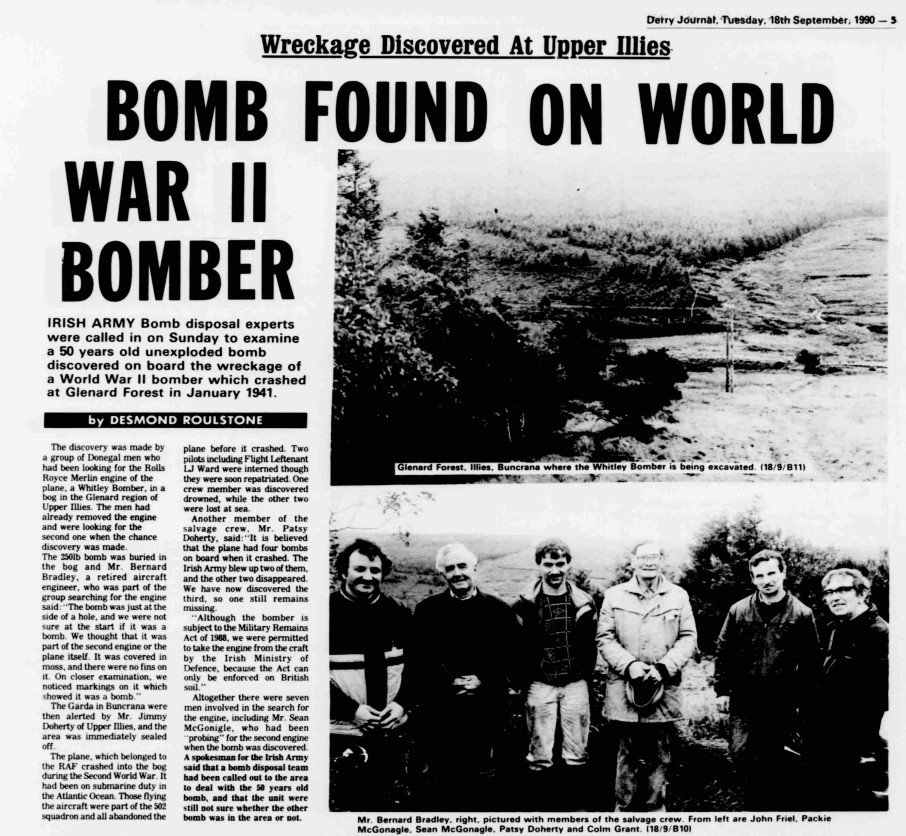
It is not known what became of the excavated wreckage.
Compiled by Dennis Burke, 2019.
